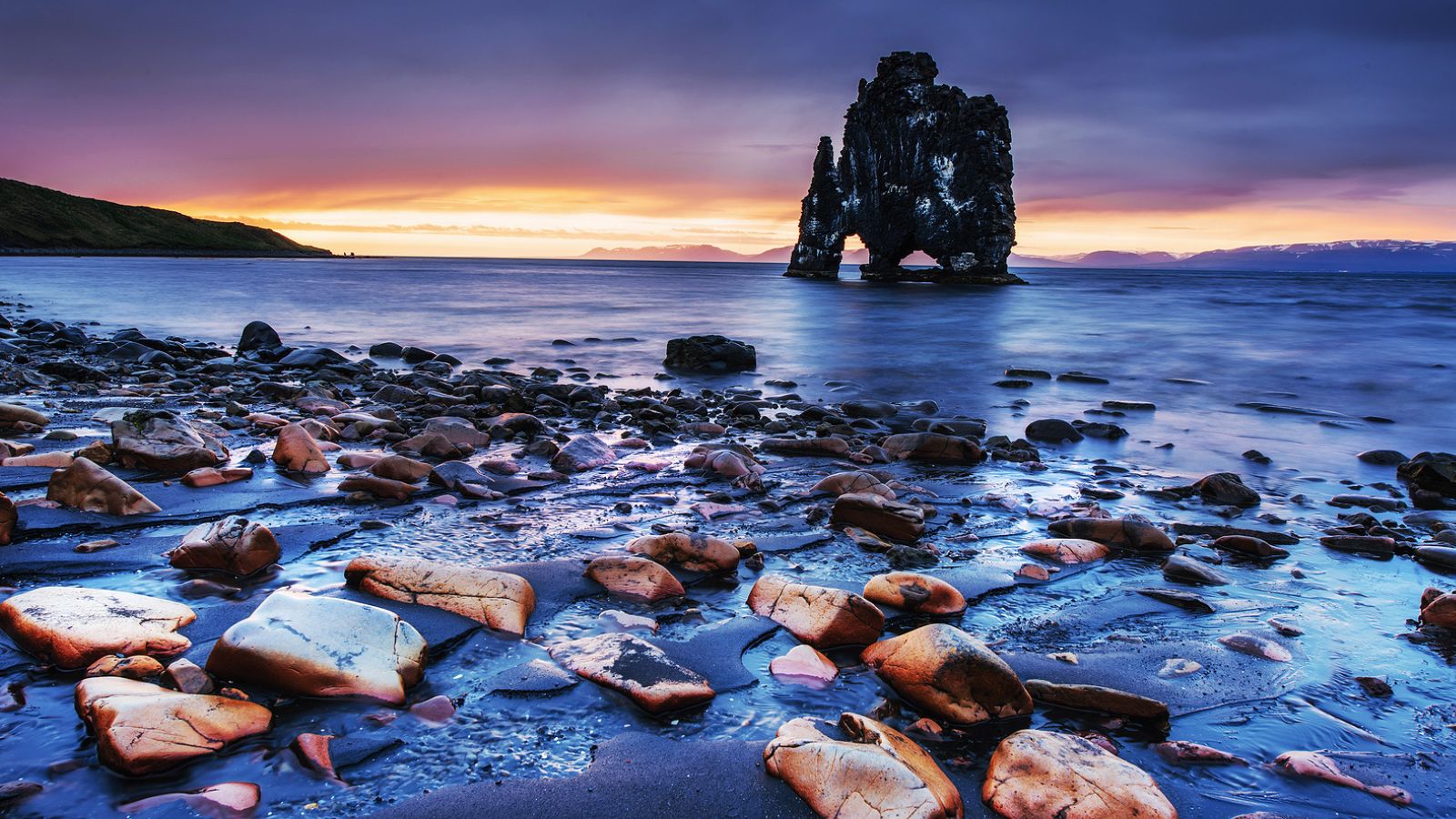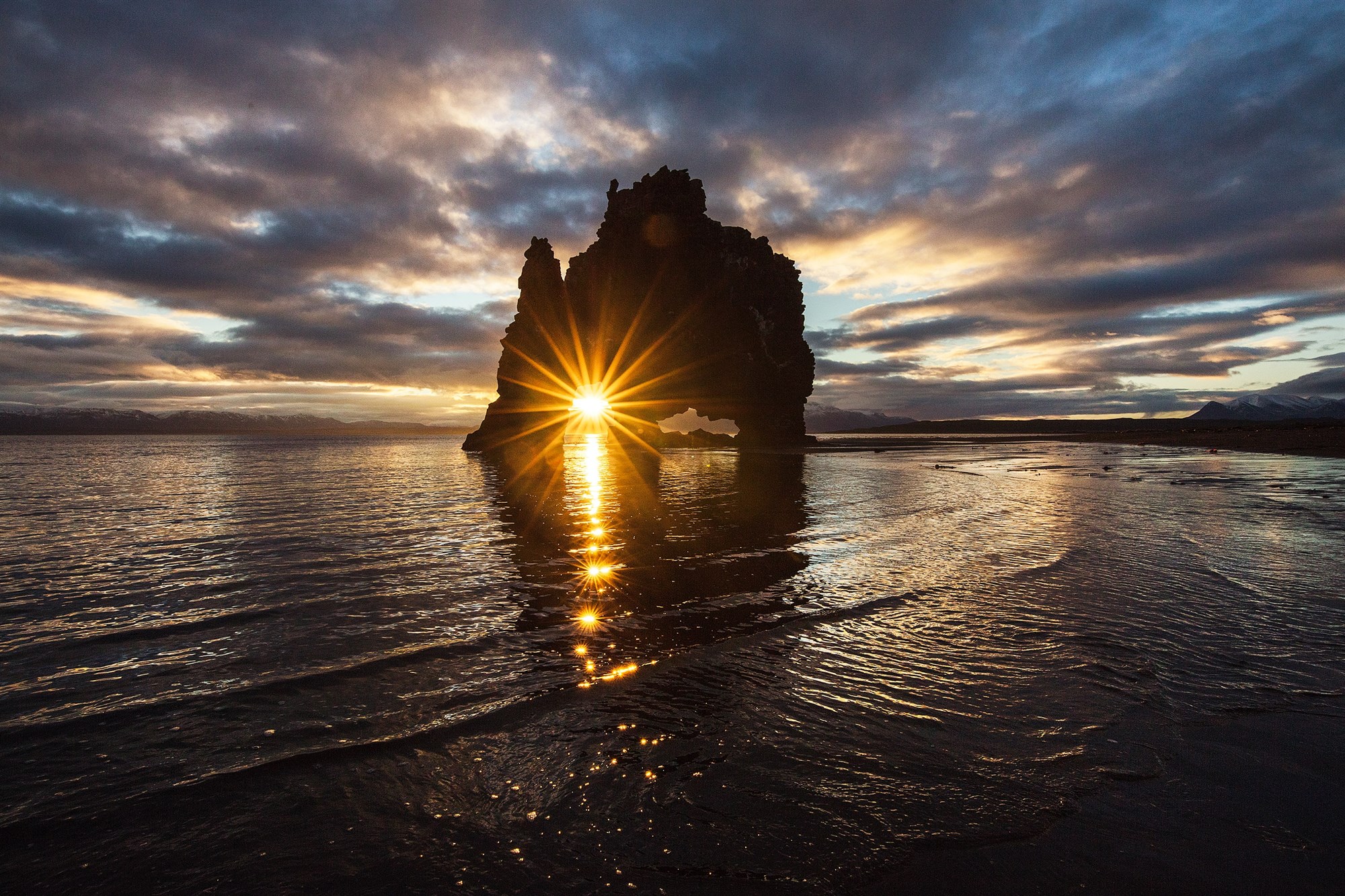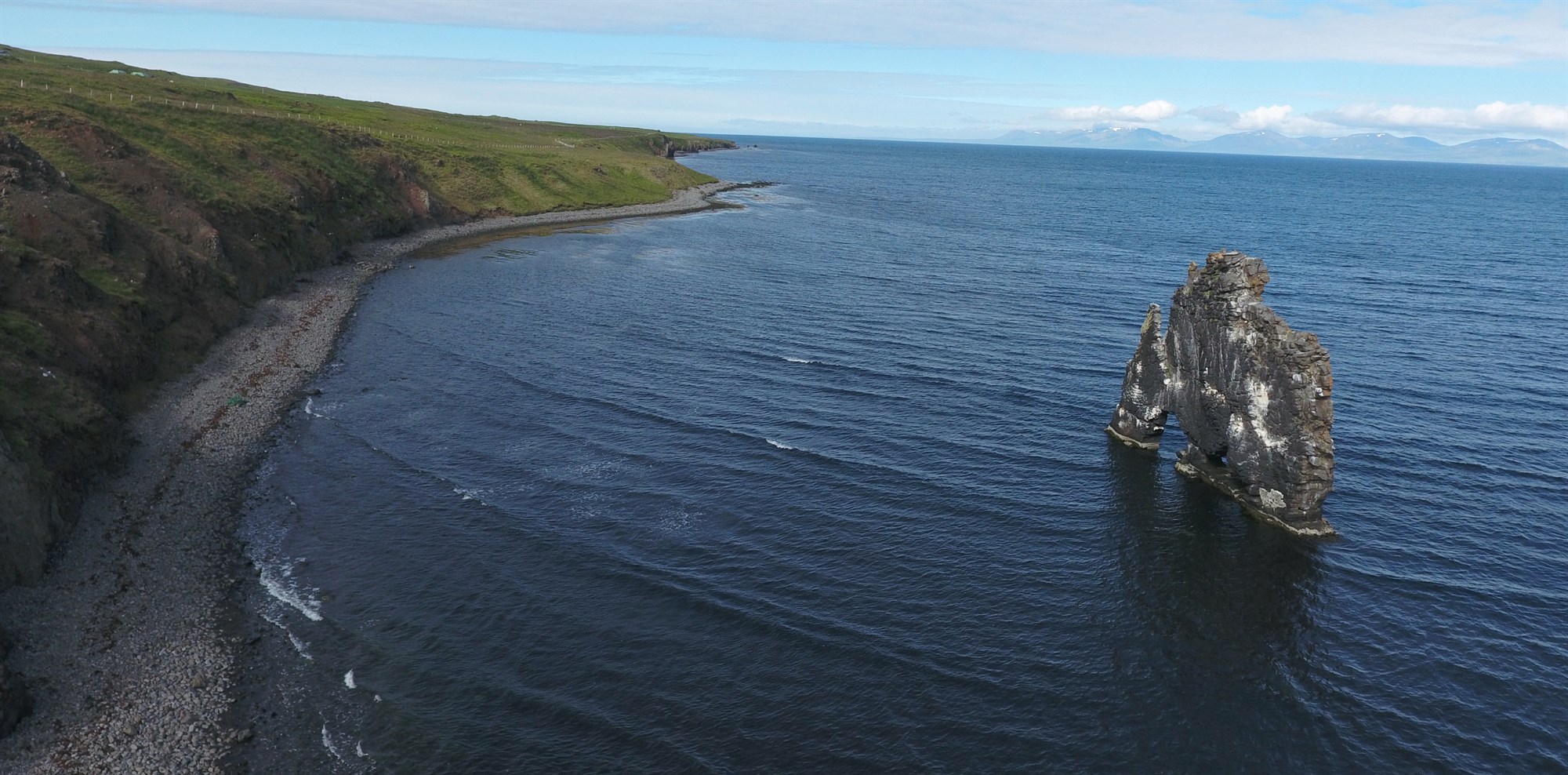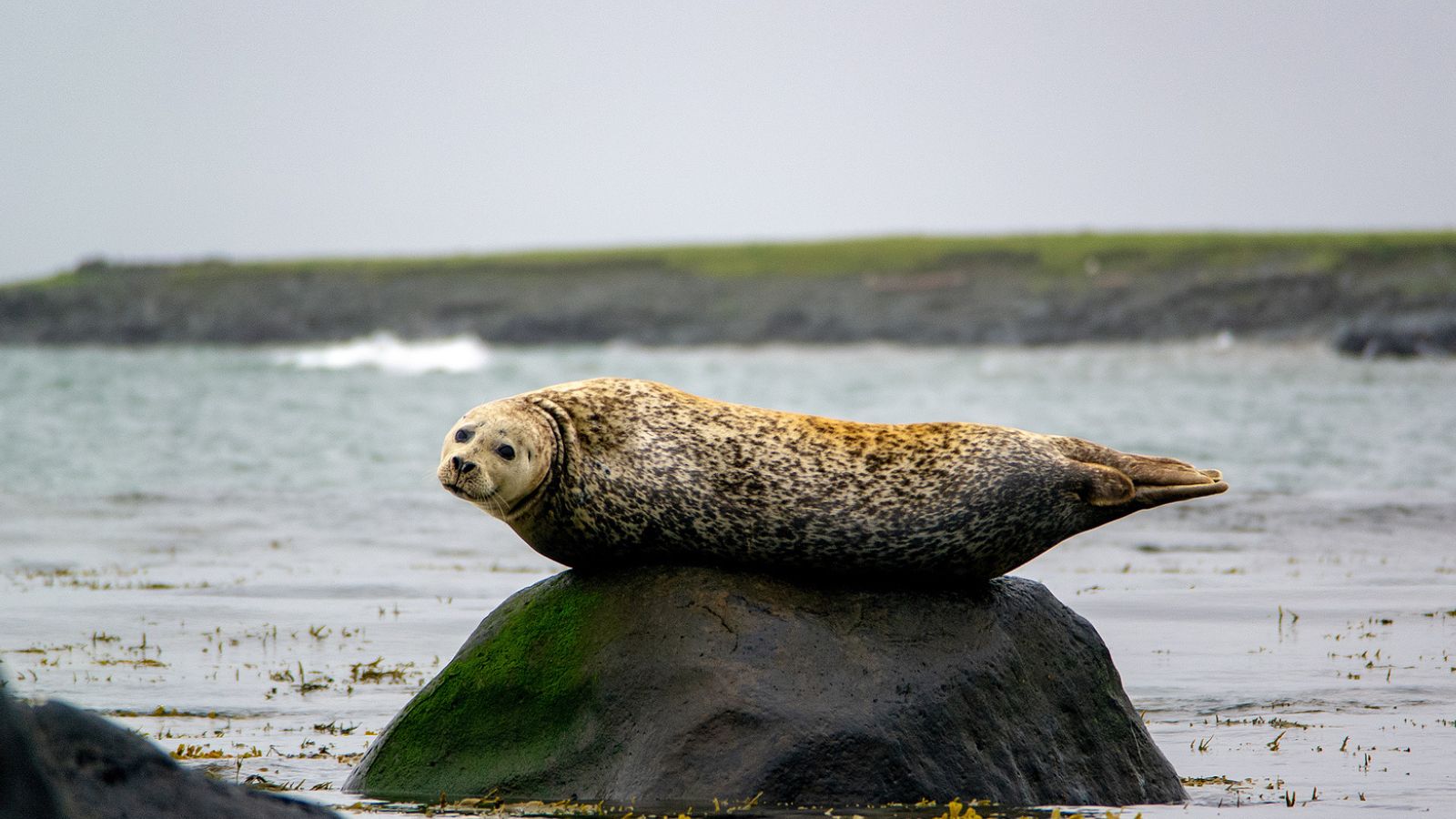Iceland is absolutely full of stunning locations. No matter where you are in the country, the volcanic nature of Iceland’s history has left incredible footprints behind it, which are now fascinating reminders of the past. Here at Reykjavik Rent a Car, we love to show you some of our favourite unmissable Iceland locations, and Hvitserkur is no exception.
Have you spotted images of Hvitserkur and wondered what on earth it is? Our guide is here to deliver all the information you could need about this quirky geographical feature.

What is the Hvitserkur Rock?
The Hvitserkur rock is one of Iceland’s most iconic natural sights, an incredible rock formation found on Húnaflói Bay in the northwest of the country. It is formed of basalt and stands a whopping 15m (50ft) above the sand. Being so close to the coast, the rock is a prime destination for seabirds nesting in its grooves, so this is an excellent destination for avid wildlife watchers. In fact, the name “Hvítserkur” in Icelandic roughly translates to “white shirt”, a name awarded for the impression made by the white bird droppings covering the rock at times.

Where is Hvitserkur?
Hvitserkur is located in the northwest of Iceland, just off the shore of the Vatnsnes Peninsula. It is about a 3-hour drive from Reykjavík in the south and about 2.5 hours from Akureyri in the north. Its location about a half-hour detour off the Ring Road makes it a convenient and enjoyable stop on a road trip.
How to Get to Hvitserkur
If you’re planning to pay a visit to this unforgettable rock formation from Reykjavík, you’ll need to leave the city heading north on Route 1 (Ring Road). You’ll follow the route through wondrous landscapes, crossing bridges and taking in coastal views before turning onto Route 711, which will lead you directly to the Hvitserkur parking area. It’s then just a short walk along a path to the cliffs, where you’ll get a fantastic vantage point over Hvitserkur.
If you’re heading to Hvitserkur from Akureyri, you’ll first leave the town heading north on Route 1. You’ll eventually loop south, following the road until you reach the turnoff for Route 716, which will bring you to Route 711, delivering you to the parking area.
How was Hvitserkur Formed?
While the native population has chosen to interpret the formation as some sort of frozen mythical creature, the sea stack has actually taken hundreds of years to form. The piece of rock was likely created during a volcanic eruption or volcanic dike, which is magma from the Earth’s surface being pumped vertically upwards. When the magma hit the cold sea, it likely cooled to form volcanic basalt rock. The waves are also the suspected culprit of the uncanny holes underneath the rock.
If Hvitserkur were left to its own devices, the “legs” of the structure would surely be eroded to the point where they could no longer support the main weight of the rock. To avoid this, the local communities started to collect money to fund a rescue repair, and as a result, concrete has been added to the base of the stack of rocks to strengthen the weakening points. For this reason, we and future generations can enjoy the rock for as long as possible!

Hvitserkur Legends
With a population that largely believes in mythical creatures like elves and trolls, there is no shortage of folklore surrounding this unique structure.
When you first see the rock at Hvitserkur, it’s likely your eyes make out something a little mythological within the structure. The spiky back and the carved-out holes create a dragon-like outline. As a result, native Icelanders have invented stories to explain such an incredible structure.
Also known as the Troll of North-West Iceland, legend has it that this structure is actually a frozen troll. According to the story, the troll was on its way to the Þingeyraklaustur convent, where it hoped to tear down the ringing church bells. While making its way over from his home in the Westfjords, the beast took no notice of the time while the sun was rising and, as is Icelandic folklore, was turned to stone in the light of day.
Things to Do and See Near Hvitserkur

If you’ve come all this way to admire the brilliant formation of Hvitserkur, you might as well make it worth your while and check out some other interesting things in the area! The Vatnsnes Peninsula is a remarkably beautiful part of Iceland and is known for its seals. Here are some things you should check out if you’re in the area:
Spot Seals at Illugastadir
Just a short drive from Hvitserkur is Illugastadir, one of the top places in Iceland to glimpse seals, lounging lazily on the beach or swimming close to land. There is a viewing hut that offers excellent views so that you can see the seals clearly, but without disturbing them.
Icelandic Seal Center in Hvammstangi
If you just can’t get enough of Iceland’s seals, this small but fascinating center is worth a visit. It’s located about 40 minutes south of Hvitserkur and teaches visitors about the lives of seals in Iceland. It’s a great stop for any wildlife lover.
Walk Along Borgarvirki
If you want to visit another rock formation steeped in Icelandic legend, Borgarvirki is a great choice. This volcanic basalt plug is situated on a ridge and offers jaw-dropping views of the Vatnsnes Peninsula and nearby lakes.
Explore Kolugljúfur Canyon
This canyon is home to the imposing Kolufossar waterfalls and a wealth of rock formations. It’s about an hour away from Hvitserkur and offers a scenic walk along the gorge with plenty of photography opportunities.
We highly recommend paying a visit to this amazing geographical feature on your trip to Iceland, if only just to add to its budding fame all over social media. Why not rent a car with Reykjavik Rent a Car and ensure you can go wherever your heart desires?